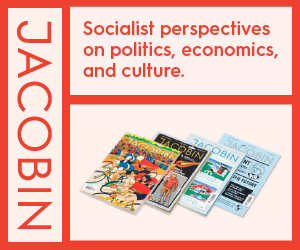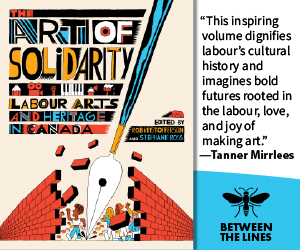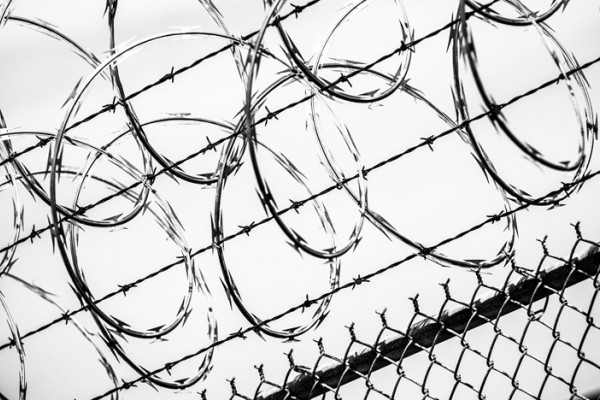Manslaughter charge for anti-Indigenous violence another win for colonial injustice in Thunder Bay
Decision to downgrade charges in death of Anishinaabe woman in Thunder Bay reveals deep racism of the city, and of Canada

Thunder Bay grain elevators on 110th Avenue. Photo by Sean Marshall/Flickr.
On the night of January 28, 2017, Barbara Kentner, a 34-year-old Anishinaabe woman, was walking in her Thunder Bay neighbourhood with her sister when she was struck in the gut by a trailer hitch thrown from a speeding car. “I got one!” her sister heard, a shout of triumph as the car sped into the night. Kentner died in hospiral after six months of agony.
Brayden Bushby, 18 at the time, was one of four white youth in the car that night, but the only one charged in her death. Last Friday, more than three and a half years since the incident, Bushby’s charge was reduced from second-degree murder to manslaughter. The trial is yet to begin after years of delays. Bushby’s high-priced Toronto defense lawyers appear to be running administrative laps around the small city’s prosecutors. For each court date many members of the Kentner’s family must travel four hours on rugged highways from Waabigon Saaga’igan Anishinaabeg (Wabigoon Lake Ojibway Nation) at their own expense.
For most Indigenous people in Thunder Bay, who by the conservative estimates of the census represent 13 percent of its roughly 110,000 residents (not counting the population of next-door community Fort William First Nation), the delay in justice is yet more evidence that Indigenous lives simply don’t matter in the city. Thunder Bay is a place that has become synonymous with violent anti-Indigenous racism and police indifference. Anishinaabe journalist Tanya Talaga’s best-selling book, Seven Fallen Feathers: Racism, Death, and Hard Truths in a Northern City, investigates the cases of youth, most from remote northern communities studying in the city, found dead in the city’s rivers between 2000 and 2011.

In this context, Kentner’s death, while terrifying, is only one particularly horrific and acute example in a city where Indigenous people are killed at an astronomical rate. In this case, the killer has a name—or perhaps four names, as the other youth in the car were not charged even as accomplices. In other cases, the murderer is less clear but no less deadly. This refers not only to the dark, masked and hooded figures many Indigenous people report cruising around the city (snatching up women for sex trafficking or throwing intoxicated Indigenous people in the rivers). I am speaking, instead, of the slow sources of systemic murder that make Thunder Bay the exception that proves the rule of the deadly nature of the Canadian colonial project. From deaths due to overdose or a broken foster care system, from premature mortality due to treatable and chronic illness to suicide, Thunder Bay murders Indigenous people fast and slow, and then blames them for their own death.
This mortality is all too often presented as an inexplicable, perhaps regrettable interruption in a place that many white and wealthy residents see as a humble wintery paradise, untouched by the woes of the world. Indeed, several politicians, including the city’s mayor, Bill Mauro, ran in the 2018 municipal election on a platform that stressed addressing Thunder Bay’s problems as the result of unwanted “outside” populations. One might presume Mauro was referring to Indigenous people who come to the city to make use of services denied to them in their home communities, as the source of the city’s ‘unfair’ national reputation.
Indeed, this is a city where police, politicians and even the media have actively taken steps to silence the truth of such violence. When, for instance, a local Indigenous street patrol insisted on sharing stories of racism and violence, the organization and its leadership was targeted. It is widely felt that local media tend to downplay the degree of violence, and the local daily newspaper regularly features op-eds and letters reiterating racist ideologies, often painting Thunder Bay as the innocent victim of unruly and lawless Indigenous interruption.
In this context, for the dominant institutions and people in Thunder Bay, Bushby will be made to play two contradictory roles during his upcoming trial.
On the one hand, Bushby will likely be held up as a true son of the city who is being unfairly raked over the coals for a youthful prank gone terribly wrong. The fact is that many of Thunder Bay’s white citizens have participated or condoned such fun and games; many Indigenous people report having been the target of drinks, eggs, forks and heavier objects thrown from speeding cars. Such recreational cruelty has been a sport here since before motor vehicles were even invented, since this city was a way-station during the fur trade, and again when it served as a military staging ground for the suppression of Louis Riel’s rebels.
Another delay and downgraded charges in a trial of a white teenager charged with fatally hurling a trailer hitch at an Indigenous woman reveals the deep racism of Thunder Bay, and of Canada. Photo by Jeremiah John McBride/Flickr.
Exploitation and abuse of Indigenous people is part of the fabric of Thunder Bay, a city erected on the foundations of colonial and capitalist accumulation. For instance, many members of the city’s law enforcement and legal community have been credibly alleged to have availed themselves of the services of under-age sex workers, as documented in the aforementioned Thunder Bay podcast. This is merely the tip of the iceberg.
Yet, reflecting on the skeletons in so many family closets, the city will have Bushby play another role, too. He will be cast as the heinous exception to a city that wants to paint itself as a northern haven of civility and peace, a “great place to raise a [white] family.” Bushby will be the scapegoat onto whose slouching shoulders the city will pile its sins so it doesn’t need to face them. Bushby’s trial and punishment will be sold to us as Thunder Bay doing right, the success of the rule of law (four years too late, but never mind). The city will pat itself on the back for its sacrifice in the name of reconciliation. We’ve changed, they will say. But this is a city where the police, the courts and the carceral system are overjoyed to churn through Indigenous lives, where at least 75 percent of inmates at the decrepit, overcrowded and lethal jail are Indigenous, many of whom are held there awaiting trial for months at a time. Today, Bushby awaits his day in court from the comfort of his own home.
We know that the reduction of Bushby’s charge from second degree murder to manslaughter unequivocally reaffirms the message that, in Thunder Bay, Indigenous lives simply do not matter. Bushby’s family has hired, presumably at their own expense, Toronto defense lawyers while Kentner’s has been forced to make do with the overworked Thunder Bay prosecutor assigned to the case by the court—hardly a fair fight.
Vigil for Barbara Kentner held on the same street where she was struck by a trailer hitch that was hurled from a passing vehicle, January 29, 2018. Photo courtesy of APTN News/Twitter.
We can anticipate that, at trial, Kentner’s entire medical and criminal history will be put on full display as evidence that she was fated to die anyway, or that her life was not worth living. Already, Thunder Bay’s active popular Facebook groups continue to spread defamatory rumours and innuendo about Kentner. Such arguments will, of course, remind those who know their history of the long-standing excuse settlers in this part of the world have used for stealing Indigenous land and killing and abusing Indigenous people.
Those of us who hope for justice are caught in an impossible trap. To fail to condemn the reduction of the charges would be to fail to condemn the heinous disposability of Indigenous life in this city. But to expect any justice from a system of criminalization that disproportionately contributes to the premature death of Indigenous people would be foolish. At best, the system will convict Bushby and he will be sent to a prison where nobody’s child belongs, to be among all the other condemned souls, mostly Indigenous, whose time and chances burn away to ash. There will be no healing, and Thunder Bay itself will continue to avoid taking responsibility.
Is there an alternative? Perhaps. To my mind, we should begin by asking the Kentner family what healing, restorative justice might look like in this case. We could ask the many Anishinaabe elders and thinkers of Thunder Bay and beyond what transformative justice might mean in practice. I suspect they would encourage us to look not to the rotten apple but to the sick roots of the tree.
Bushby’s trial is already a tragedy, no matter the outcome. For true justice to be served Thunder Bay itself must stand trial. How did we raise our child, Bushby, to murder our sister, Kentner, for sport? How can we claim Bushby as not the exception but the norm? How is this crime connected to a broader system of settler colonial violence that snatches away so many Indigenous lives? And how can we move beyond the half-hearted rhetoric of reconciliation to imagine the real, substantial transformations that need to take place to ensure something like this never happens again?
Max Haiven is Canada Research Chair in Culture, Media and Social Justice and co-director of the ReImagining Value Action Lab (RiVAL) at Lakehead University. His recent books include Revenge Capitalism: The Ghosts of Empire, the Demons of Capital, and the Settling of Unpayable Debts and Art After Money, Money After Art: Creative Strategies Against Financialization. More information can be found at maxhaiven.com.










